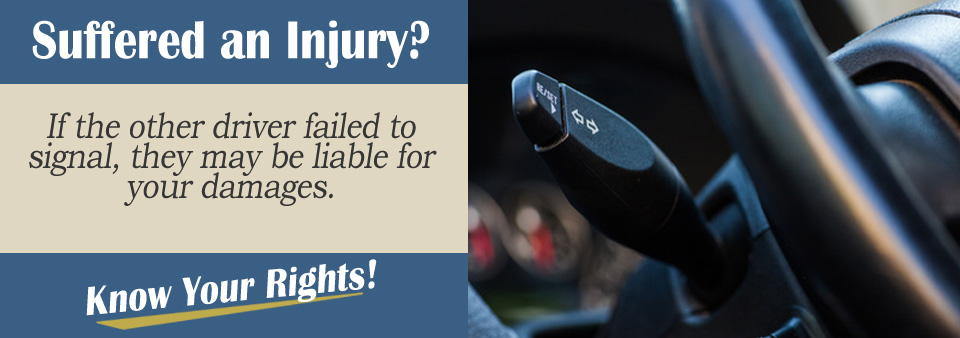Most of us tend to take driving with a certain degree of complacency, yet even a small mistake or indecisive turn can lead to horrific injuries. It is the size and speed of many modern autos and trucks that are responsible for such a high fatality rate on U.S. highways.
If you have been injured through no fault of your own, or you believe that another driver was mostly at fault, then you should consider making a claim for compensation with the help of a personal injury attorney.
No Turn Signal Auto Accident Scenarios
A no turn signal auto accident is caused primarily when the driver in front of you makes a turn suddenly without indicating. It is most likely to cause a collision if you were about to overtake, thinking that it was safe to do so, then smashing into the car as it attempted to turn in front of you.
Another scenario plays out at an intersection when you see another vehicle across the intersection appearing to be proceeding straight ahead.
You move forward to cross the intersection but hit the vehicle as it suddenly turns in front of you. The vehicle driver may have thought that he or she had signaled with their turn lights, but that in fact did not happen.
Depending on the usual variables of speed, relative size of vehicle colliding and exactly where the impact takes place, no turn signal accidents can lead to very serious injuries.
Who is to Blame Where There Was No Turn Signal?
Generally, if you hit another vehicle or you are hit by another vehicle whose driver failed to indicate a turn with the appropriate turn signal, then that driver will most likely be at fault.
There are a number of situations when it might be more difficult to determine who was at fault. For example, if you are behind another vehicle, but are too close when the other vehicle makes a sudden turn, then you may be partly at fault.
You should have kept a reasonable, safe distance behind the other vehicle in case it stopped suddenly. The same applies if you overtake, but fail to signal yourself or are traveling more than the speed limit.
In less common situations, the other driver’s turn lights may be faulty, so in that case a decision about who is at fault will depend on whether the driver knew that the turn lights were faulty, in which case he or she should have used hand signals.
In situations in which an accident has happened but more than one person is determined to be at fault, the relevant state laws on contributory negligence will be used to work out the value of any compensation payment.
How a Personal Injury Attorney Can Help
Auto accidents are sometimes quite straightforward and only a foolhardy driver would try to wriggle out of admitting fault. At other times the situation may be more complex.
It may take time to decide who exactly was to blame and there may be situations where more than one person shared the blame for the accident. In every personal injury situation, it is important to get the best attorney you can to represent your interests and negotiate a settlement on your behalf.

